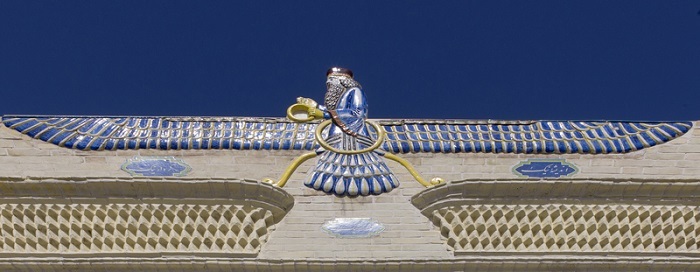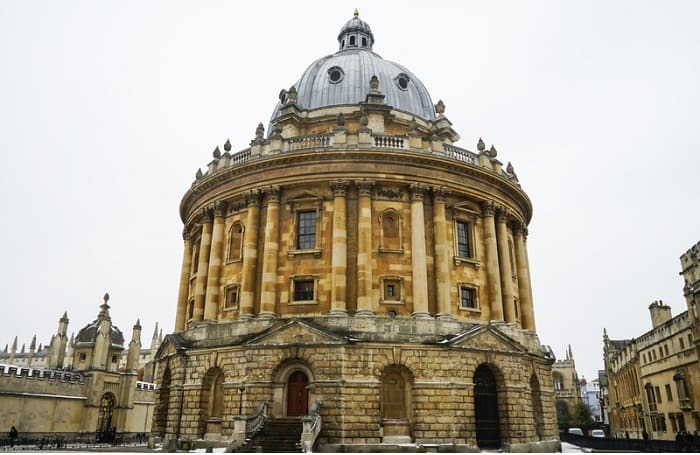

Avesta is a collection of religious texts composed by Zarathustra, the ancient Iranian prophet, and his followers. This collection includes the Yasna, Yashts, Vispered, Vendidad, and Khorda Avesta texts. The Avesta is the primary source of Zoroastrian beliefs and represents a major component of the Zoroastrian religion. Avesta is called ‘the Bible of Zoroaster’. It is believed that the Avesta was written in the Avestan language, which is a Middle Iranian language. The texts are largely composed in verse form and provide a unique insight into the ancient Iranian religious and cultural traditions.

Sign of Zoroastrianism
Zoroaster, whose real name was Zarathustra, is widely credited with founding the Zoroastrian religion and composing the Avesta. He is believed to have been born around the 17th century BC in the eastern Iranian region of Airyanem Vaejah, which is now part of modern-day Iran. Zoroaster is credited with introducing a monotheistic faith that focused on the worship of Ahura Mazda, the Wise Lord.
During the reign of Darius I, the Achaemenid Empire adopted the Zoroastrian religion and allegedly, they wrote their version of Avesta. However, primary sources are missing to support this assertion and it is believed that their Avesta was apparently destroyed during the profound conquest of Alexander the Great. The Hellenistic Seleucid Empire succeeded the Achaemenid Empire and continued to practice the religion.
Further, the Parthian Empire succeeded them, where, unlike in the previous empire, the upper class also adopted Zoroastrianism. A new Avesta was written during this period, which was based on the texts which were supposedly never found after the end of the Achaemenid Empire. This claim is questioned by many modern-day historians.
A new version of Avesta was written during the Sassanians as well. Many Zoroastrian priests were brought to the court of Ardashir I. This continued even during the reign of Shapur I, Shapur II, and Kosrau I. The text prepared was based on Aramaic but also preserved the lost Avestan.
Gathas are the most significant section of Avesta. Gathas consist of praise songs which refer to prayer petitions, worship adoration, and instructions on how to devote life to the Zoroastrian way of life.
Gathas are written in the metrical forms of the ancient Indo-Iranian religious prose and poetry. They make up a book containing with about 6000 words, put in about 1300 lines which are set in 238 verses. There are 17 chapters in the Gathas and each of these is called a Haiti. The verses profusely addressed the only god, Ahura Mazda, and the public.
Zoroastrianism which was revered during the Sassanian Empire was suppressed in 651 CE when the empire fell to the Muslim Arabs. Many people converted to Islam. Zoroastrian libraries were burned down and the fire temples were transformed into mosques.
Between the 8th and the 10th centuries CE, Parsees took the Avesta with them to Gujarat (India). It was only after 1723 CE that a part of the Avestan manuscript was brought back to Britain from India. There, it was kept in the Bodleian Library of Oxford University and came to light when a French scholar named Abraham Hyacinthe Anquetil-Duperron came across the work.

Bodleian Library, Oxford University
Avesta is perhaps one of the least familiar religious texts. It was lost for about a thousand years and was written in a now-dead language. But thousands of people around the world still follow the teachings mentioned in the Avesta. It serves as a key to understanding Zoroastrianism. Zoroastrianism was the first monotheistic religion which profoundly introduced the new concepts such as the concept of judgement after death, the concept of heaven and hell, of messiah, of resurrection of the dead, etc. There have been various instances of new faiths influencing the beliefs of believers. However, Avesta still managed to serve as a powerful work to provide a vision of a loving deity.
To conclude, Avesta is a sacred text of Zoroastrianism and was originally composed by the prophet Zoroaster between 1500 and 1000 BCE. Zoroastrian religion developed, like other religions, from oral traditions. The hymns and teachings of the religion were written and recited in a language called Avestan, which is long dead. It is divided into six prime sections. These are - Yasna-Gathas, Visperad, Yashts, Vendidad, Minor texts, and Fragments.
The text was lost after the end of the Sassanian Empire under which it had bloomed beautifully for years. Later, it came back to light after a french scholar attempted a research study on the text.
Q1. Which language is the closest to Avestan?
Ans. Baluchi, Kurdish, Pashto, and Sogdian, are the languages which are closely related to Avesta. These have one thing in common, that is, they come from the Indo-Iranian branch of languages. It is also related to old Persian.
Q2. What is the most important symbol in Zoroastrianism?
Ans. The most important symbol in Zoroastrianism is the Faravahar. There are numerous interpretations as to what a Faravahar symbolizes. With no consensus meaning, it is believed that it depicts the fravashi (personal spirit).
Q3. What does Avesta say about abortion?
Ans. Zoroastrian scripture asserts that a soul is added to the fetus’ body after four months and ten